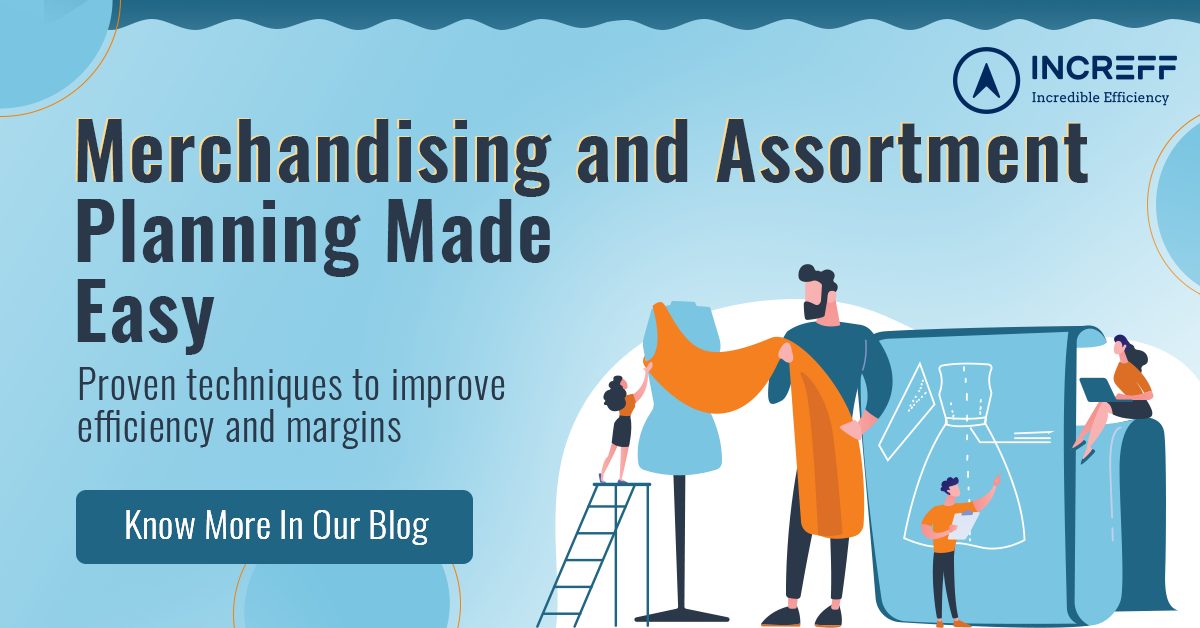
SSmart Merchandising
Tough Challenges need creative solutions. Merchandise planning made easy now!
Assortment or option planning is a holistic process that blends fashion with finance. It helps merchandisers and retailers create a comprehensive store package that satisfies customer demand and allows businesses to achieve financial goals. A part of assortment planning is smart decision-making in merchandise planning and buying process.
Gartner recognizes Increff as a key tech-player for devising befitting solutions for new-age brands. Increff Iris provides analytics-driven pre-season and in-season buy plans with tactical execution. Its algorithm-driven platform helps retailers better understand customer requirements and align planning to ensure higher store profits and bigger sales.
Budgets are too tight, margins are too lean, brands cannot afford guesswork in the buying process.
Retail has changed dramatically in the last year. Smart assortment planning is critical in providing hyper-localized recommendations that curate the right mix at stores and resonate with local shoppers.
Pre-season planning
1) Store clustering
Increff Iris takes one step further with a granular store-level analysis that is location-specific, and not region-specific. It creates a win-win-win combination for merchandisers, retailers, and customers by considering each store as a separate entity, with a different customer base and a unique size set ratio.
2) Product ranging
Designing a perfect mix of category, price range, size ratio, etc. drilling up to 17 layers of attributes for predicting the ideal store mix. Getting precise width and depth in its offerings at the PoS/ store level, and overall regional level.
3) Assortment / Financial Plan reconciliation
The assortment plan for each store is made in parallel with the financial plan. It is then adapted to the individual store to ensure complete inventory is well distributed to meet store-level financial targets.
4) Replenishment and flow planning
This is done considering seasonality, holiday or festive season, and recency. It involves planning for drops, NOOS (Not Out Of Stock) styles, replenishments, and replacements.
In-season planning
1) Plan to actual reconciliation
Increff Iris intelligently handles supply chain inaccuracies by optimizing whatever inventory is available in the warehouse at the time of sales. Through proper allocation, it helps stores maximize revenue effectively.
2) Allocation support
Planning for a new store or collection-level allocation, replenishment, or a possible replacement for bestseller styles, Iris offers inter-store transfers to reduce unnecessary buying.
3) Open-to-buy
With quick store analysis, Iris has the capability to generate a buy plan at any frequency desired by the brand to increase inventory turns. It automates drop planning and style level planning for each store to increase sales.
4) BI dashboards
Extremely useful for quick in-season decision making, the BI dashboards can instantly generate reports to analyze top-bottom sellers, drops, trends comparison based on stakeholder requirements.
As the unpredictability of 2020 continues, it is a challenge for brands to determine trends and assess true customer demand. Hence it is critical to plan cautiously and optimize stores for a better experience and higher conversion. with Iris. Reimagine planning and allocation for consistent and profitable growth with Increff Iris.
27 January, 2021
RRegional Utilization
Riding the E-commerce Wave: Prepping for Peak Season…
The holiday season is the busiest time of the year for e-commerce brands. With the…
30 October, 2023
6 months agoSSmart Merchandising
Mastering Demand Forecasting: A Comprehensive 7-Step Roadmap to…
Amazon, the massive online retailer, rakes in significant profits in North America because numerous local…
25 September, 2023
7 months agoSSmart Merchandising
Top 5 Merchandising Solutions: Global Leaders in Enabling…
Have you ever considered the intricacies of managing a fashion brand across both retail and…
5 September, 2023
8 months ago



